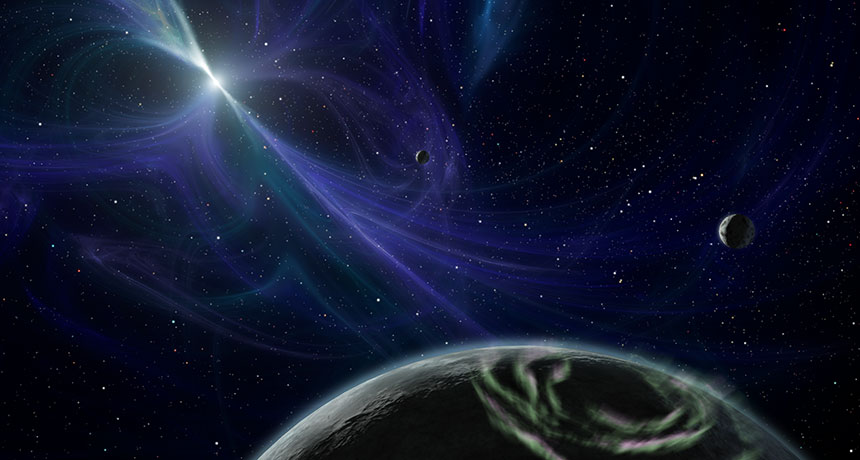
RARE FIND The three rocky planets around pulsar PSR B1257+12 (illustrated) were the first confirmed exoplanets. Pulsar-orbiting planets are quite rare, a new survey suggests.
JPL-Caltech/NASA

RARE FIND The three rocky planets around pulsar PSR B1257+12 (illustrated) were the first confirmed exoplanets. Pulsar-orbiting planets are quite rare, a new survey suggests.
JPL-Caltech/NASA